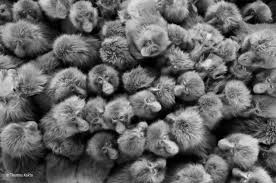So you’re interested in wildlife photography? You found a perfect blog post to read because here we have outlined the best wildlife photography tips for you! Wildlife photography is a very unique type of photography. It takes special skill to take the phonemic photos that professional photographers have taken. Thomas has been recognized time and time again for his photos, including from National Geographic. Since National Graphic has recognized him, this blog post is about helpful wildlife photography tips. If you are curious about more tips make sure to visit National Geographic.

A great example of wildlife photography
Using a Telephoto Lens
The first helpful tip on wildlife photography is that is really helpful for using telephoto lenses to take these type of photos. This is so important because telephoto lenses capture shots from a far distance. This is specially good for wildlife since a lot of animals react when you are up close to them. In addition to using a telephoto lens, it is important to use a tripod. Telephoto lenses are very heavy and hard to hold steady so having a tripod is very helpful in making the photos look great. However when using a telephoto lens, you can’t capture the natural environment that the animals are in.
Lighting is Everything
Another tip about wildlife photography is to focus on the lighting. Lighting is critical for any type of photography but for wildlife photography it is crucial to have the right lighting to capture everything about the animal you are capturing. However, that is not saying that every photo of the animals taken needs to be super bright so you can see the animal clearly. Having the right lighting for a certain animal means adjusting the lighting based on the type of animal. For example, Thomas has a lot of pictures of penguins and the lighting is very bright, even though it is in the snow, having bright lighting brings out the details of the penguins. While lighting is very important for photography, learning about the animals is also vital for taking photos of the animals.
Get to Know the Animals
Looking at Thomas’s photos it seems that he has a lot of prior knowledge towards the animals he is shooting. Knowing about where penguins hangout, where they find food, the time of the day they sleep, etc. It’s important to know prior knowledge about the animals because that way your photos will look a lot better as they will look natural and you will be able to get great shots of the animals in action. I think what is really great about Thomas’s photography is that the majority of his photos are animal action shots. Whether that is the penguins diving into the water, finding food, huddling, or belly sliding on the ice. The photos look a lot more real and engaging to look at versus other photos of just penguins standing there on the ice. This goes along with the polar bear photos too, it is a lot more interesting to look at pictures of polar bear babies doing something. Looking at a picture of them playing with each other is so engaging!
Don’t Ignore the Background
Another tip for wildlife photography is that you should also pay attention to the background settings of your animals. Having an interesting background adds to the photo and makes it more intriguing and tells you more about the wildlife. It is hard though when you are taking pictures of animals that tend to hangout in settings such as ice, like the penguins. Thomas’s photos of penguins doesn’t have a very detailed background as it is just ice or water. However if you look at some of his penguin shots, he angles the camera to capture a bunch of penguins in the background.
Learning to be Incognito
Something that I thought was interesting when looking at his photography is that it feels like the animals don’t even notice that he’s there. The photos look so natural. This is because Thomas stays discreet when taking his wildlife photos! It is something that is very important for wildlife photography. If you think about it, if the animal sees the photographer, than the photos do not look natural. It defeats the purpose of telling a story in a photo. In various articles online it talks about taking photos of animals that in order to be hidden you must have practice. I mean after all practice is the key to be good at anything! Practicing staying hidden with smaller animals is a great start. Not only practicing staying hidden to take photos but also practice taking wildlife photography on smaller animals, like birds.
Focus on Composition
The last tip for wildlife photography is applying the rules of composition. The rules of composition is important for any type of photography, really. But especially for wildlife, it is important to do this as the photos will look a lot cleaner. Dividing the photo into a grid where there is three parts to the image. Now positioning your subject into a part of the grid will make the photo look really nice. Thomas does this in a lot of his photos, specifically for his penguins which I think makes it look so pleasing. Composition can be difficult to do all the time in photos but it is a helpful tip!
Hopefully these tips will help you take better wildlife photos! I know for me I did not know a lot of these suggestions to improve my photography skills. I know for me, sometimes looking at wildlife photography tips online are very vague and not super helpful but I hope for you this blog post is more what you were looking for. Overall these wildlife photography tips will help you be on your way to having your photography looking like Thomas Kokta’s magnificent penguin and polar bear photos.

